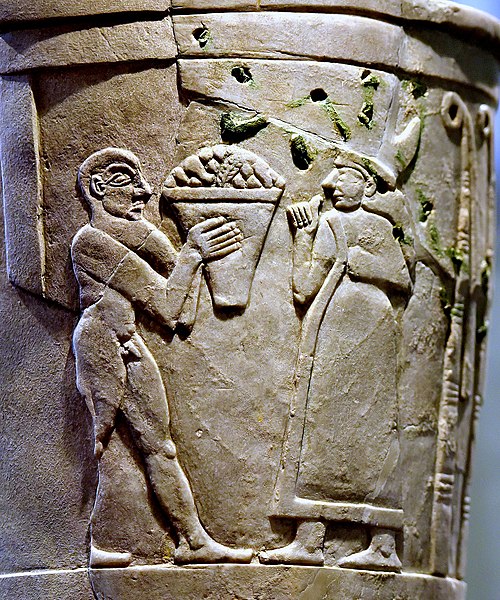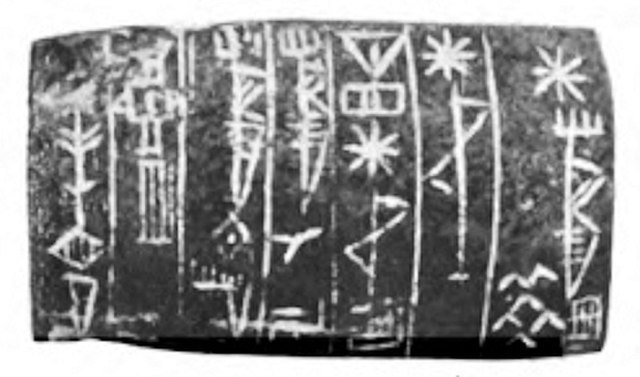The Warka Vase or Uruk vase is a slim carved alabaster vessel found in the temple complex of the Sumerian goddess Inanna in the ruins of the ancient city of Uruk, located in the modern Al Muthanna Governorate, in southern Iraq. Like the Uruk Trough and the Narmer Palette from Egypt, it is one of the earliest surviving works of narrative relief sculpture, dated to c. 3200–3000 BC. Simple relief sculpture is also known from much earlier periods, from the site of Göbekli Tepe, dating to circa 9000 BC.
The original Warka Vase, dated to c. 3200–3000 BC. National Museum of Iraq, March 2019.
The votive Warka Vase within its display case at the Sumerian Gallery of the Iraq Museum. It is about 1 meter tall.
The vase shows presentation scenes to goddess Inanna.
Top register, Warka Vase, Iraq Museum
Inanna is the ancient Mesopotamian goddess of love, war, and fertility. She is also associated with sensuality, procreation, divine law, and political power. Originally worshiped in Sumer, she was known by the Akkadian Empire, Babylonians, and Assyrians as Ishtar. Her primary title was "the Queen of Heaven".
Goddess Ishtar on an Akkadian Empire seal, 2350–2150 BCE. She is equipped with weapons on her back, has a horned helmet, places her foot in a dominant posture upon a lion secured by a leash and is accompanied by the star of Shamash.
Inanna receiving offerings on the Uruk Vase, circa 3200–3000 BCE
The Uruk Vase (Warka Vase), depicting votive offerings to Inanna (3200–3000 BCE).
Tablet of Lugal-kisalsi







